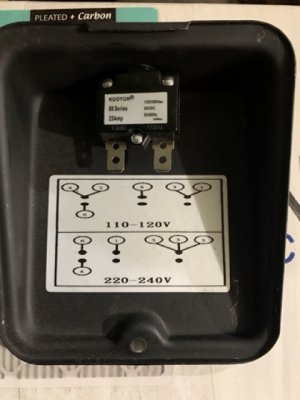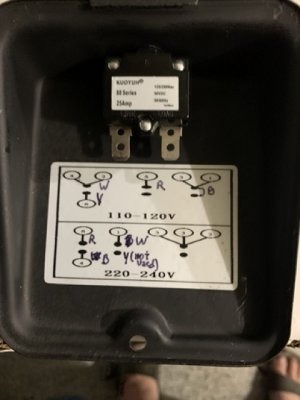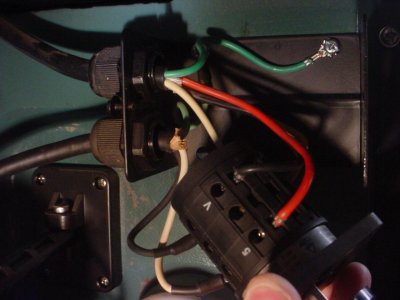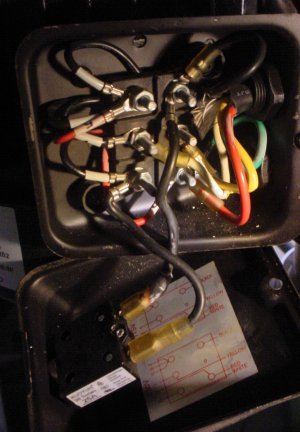- Joined
- Jun 5, 2023
- Messages
- 37
Reviving this old thread to add some info in the hope that it might help someone like this thread has helped me.
I have a Rong Fu RF-45 made in 2013 and it has an almost identical motor and switch wiring setup. I was attempted to convert it to 240v today following the guide on the inside of the motor connections box. Had everything wired up correctly and tested it out. Funny noise and sparks. Shut it off immediately. Rechecked my wiring and everything looked fine. Did some research and found this thread.
Here was the source of my problem:

Looks very similar to the wiring diagram from Werdi. Notice the problem? Not to keep anyone in suspense, the diagram only shows the connections for the motor wires. It does not have the connections for the switch wires. I assumed because there were no switch wires on the diagram that the switch connections were supposed to remain where they were and I just needed to move around the motor wires. That was not the case. Here is the same cover after I have added additional info on the proper wiring scheme. Note the crossed out portions were because I thought I had it right but it was running in reverse.

So using the wiring diagram from Werdis picture I was able to get it setup correctly. Notice that the wiring is the same but the terminals are in a bit of a different order. The motor seems to be working fine even after my inadvertent miswiring.
Just wanted to say thanks to Werdi and Mark because without this thread I would have been lost.
I have a Rong Fu RF-45 made in 2013 and it has an almost identical motor and switch wiring setup. I was attempted to convert it to 240v today following the guide on the inside of the motor connections box. Had everything wired up correctly and tested it out. Funny noise and sparks. Shut it off immediately. Rechecked my wiring and everything looked fine. Did some research and found this thread.
Here was the source of my problem:

Looks very similar to the wiring diagram from Werdi. Notice the problem? Not to keep anyone in suspense, the diagram only shows the connections for the motor wires. It does not have the connections for the switch wires. I assumed because there were no switch wires on the diagram that the switch connections were supposed to remain where they were and I just needed to move around the motor wires. That was not the case. Here is the same cover after I have added additional info on the proper wiring scheme. Note the crossed out portions were because I thought I had it right but it was running in reverse.

So using the wiring diagram from Werdis picture I was able to get it setup correctly. Notice that the wiring is the same but the terminals are in a bit of a different order. The motor seems to be working fine even after my inadvertent miswiring.
Just wanted to say thanks to Werdi and Mark because without this thread I would have been lost.



